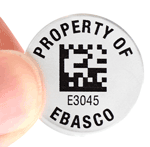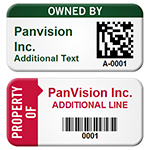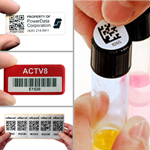A.
Our labels are readable by almost any legitimate scanner. The trouble starts when you look at which scanners work with different asset tracking software packages.
Scanners, in effect, are just another way to get information into your PC or software. We think of scanners like a super-efficient, error-less keyboard. One would think, then, that most scanners would work with most software. Sadly, this is not always true. Understand that many software providers and their local distributor brethren usually make more money off of the equipment and label supplies than on the software. Hence, their own deals with scanner vendors often drive which scanners are “compatible” with your software.
Luckily, the newer software packages are increasingly “open” and many different scanners work well.
Some key considerations when choosing a barcode scanner are:
• Do you need portability? Do you want your scanner to be battery operated and capable of storing a day’s worth of scans? Or, can you get buy with just attaching the scanner’s USB cord to a laptop (which is much cheaper)?
• What’s your budget? Contact scanners are cheap (think <$50). Laser scanners are much more costly ($200 - $800). We sell a keychain scanner that stores over 500 scans and cost less than $100.
• Do you need a long range scanner? These are great for warehouses and scanning that top rack, but they are also very expensive.
• Would you be willing to buy a used scanner? eBay has pages and pages of great scanners for sale.
• Could you use your SmartPhone? More and more asset tracking scanning is done by a SmartPhone – the economics and ubiquitous use of SmartPhones are just too compelling. Most innovative and new asset tracking software now incorporates a SmartPhone interface.
















 Asset Tags Guide Part 1
Asset Tags Guide Part 1
